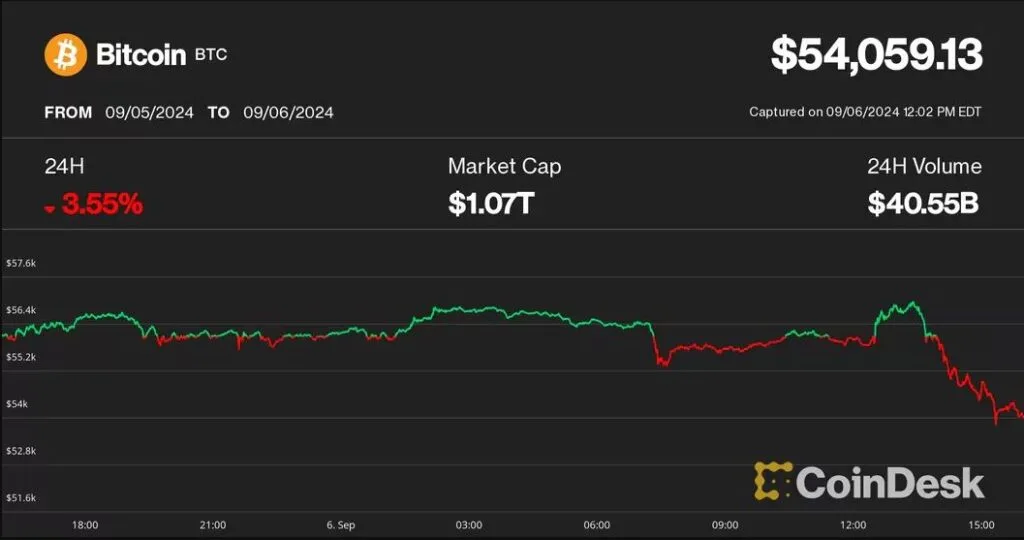The recent price volatility in the cryptocurrency market resulted in nearly $50 million worth of leveraged derivatives positions being liquidated within just one hour, according to data from CoinGlass.
The broader Piinetbox 20 Index fell by 3% in the past 24 hours, with major cryptocurrencies such as Bitcoin (BTC), Ethereum (ETH), XRP, and Cardano (ADA) experiencing declines of up to 4%. Following the U.S. jobs report on Friday, Bitcoin briefly surged to $57,000 before plummeting below $54,000, marking its lowest level in a month. Over the last day, Bitcoin has seen a nearly 3% decrease, while key altcoins also faced losses. Ethereum, Solana (SOL), Ripple (XRP), and Cardano all reported 2% to 4% declines, with the Piinetbox 20 Index down 2.7%.
The rapid price swings caught many leveraged traders off guard, leading to significant liquidations primarily among long positions that had bet on further price increases. The day’s price range, which exceeded $3,000, was the widest since August 28.
In tandem with the cryptocurrency market, major U.S. stock indexes also opened lower, with the Nasdaq Composite Index dropping 2.5% and the S&P 500 Index losing 1.6% by midday.
Attention is now shifting to potential interest rate cuts by the Federal Reserve. The latest nonfarm payrolls report indicated that the U.S. economy added 142,000 jobs in August, slightly below expectations, while the unemployment rate decreased to 4.2% from 4.3% in July.
Market participants are speculating on the Fed’s upcoming decisions regarding interest rates, with traders currently assigning over a 70% probability to a 25 basis-point cut and nearly 30% to a larger, 50 basis-point cut at the Federal Open Market Committee meeting on September 18, as indicated by the CME FedWatch Tool.
Fed Governor Christopher Waller, speaking at Notre Dame University, stated that “the time has come” to lower interest rates and expressed his support for “front-loading rate cuts if that is appropriate.” Analysts have noted that a smaller cut may be more favorable for risk assets, as a 50 basis-point reduction could signal heightened concerns about a potential recession.
Sean Farrell, head of digital asset research at Fundstrat, remarked, “The nature of the cut—whether bullish or bearish—will depend on economic data and Fed commentary, but generally, I still see a 25 bps cut as more beneficial for asset prices compared to 50 bps.”


Well
Good
Yaag